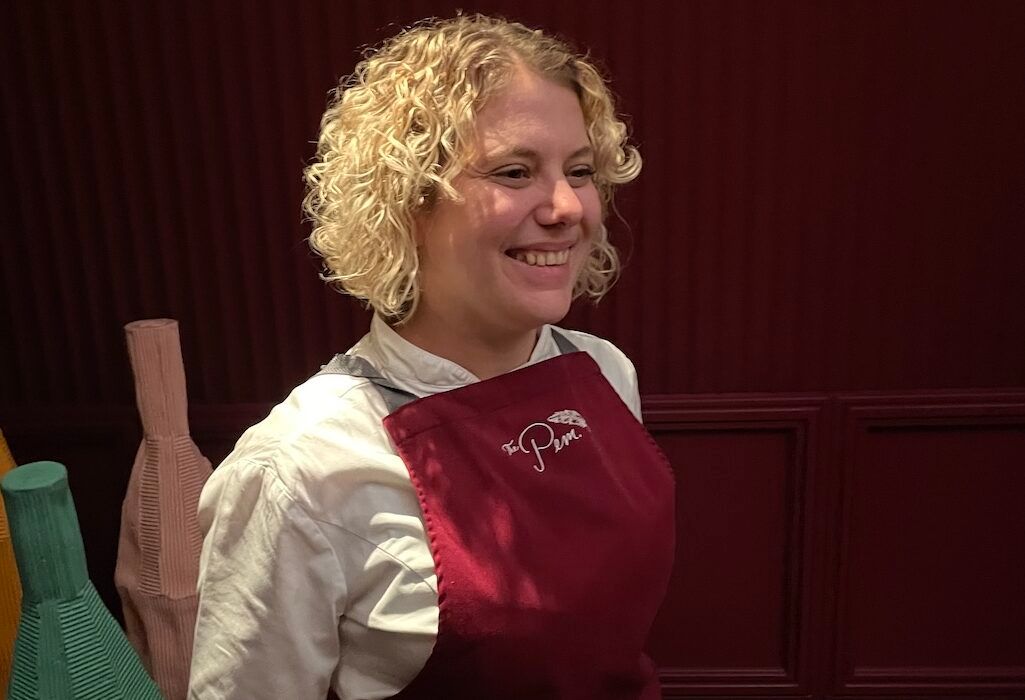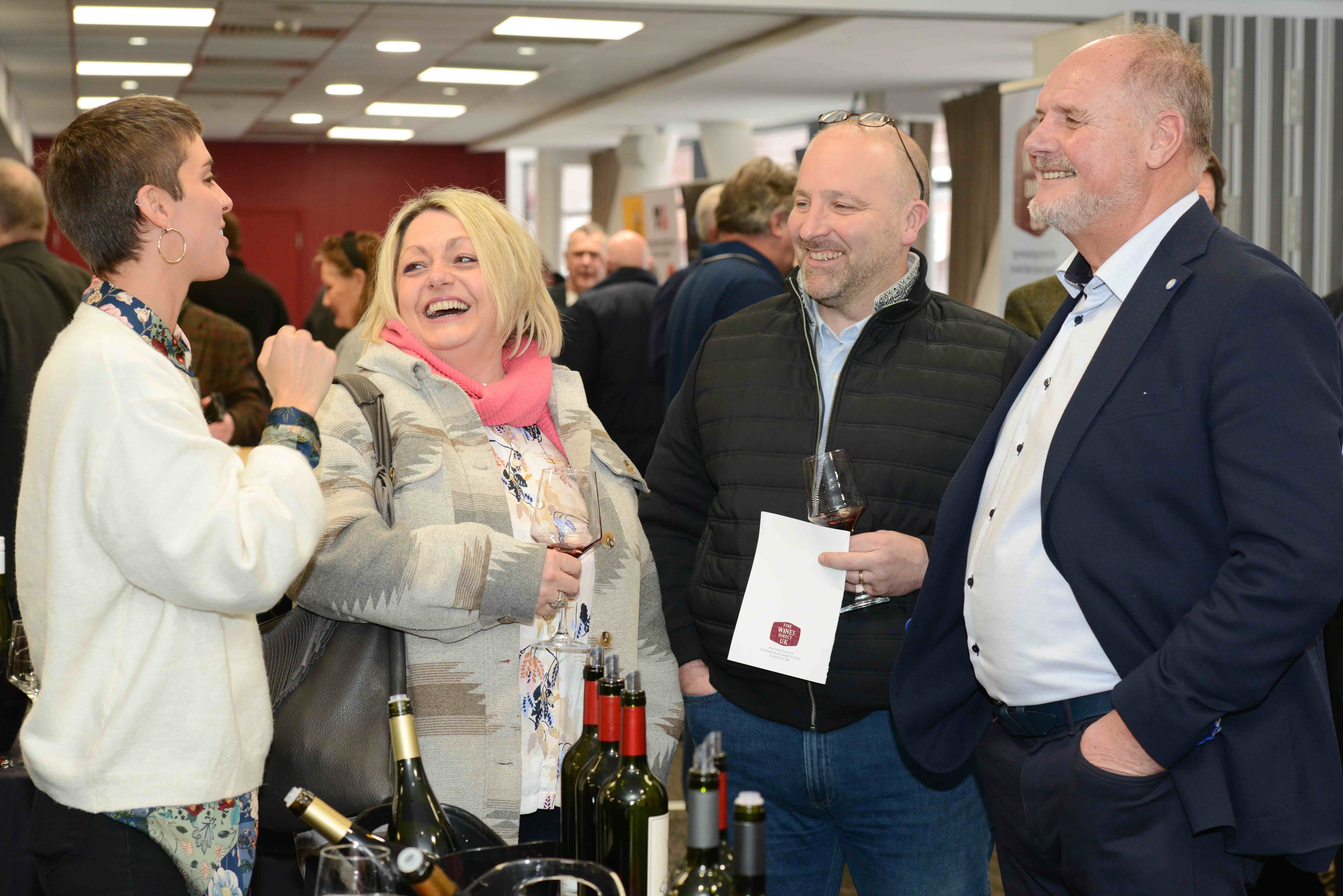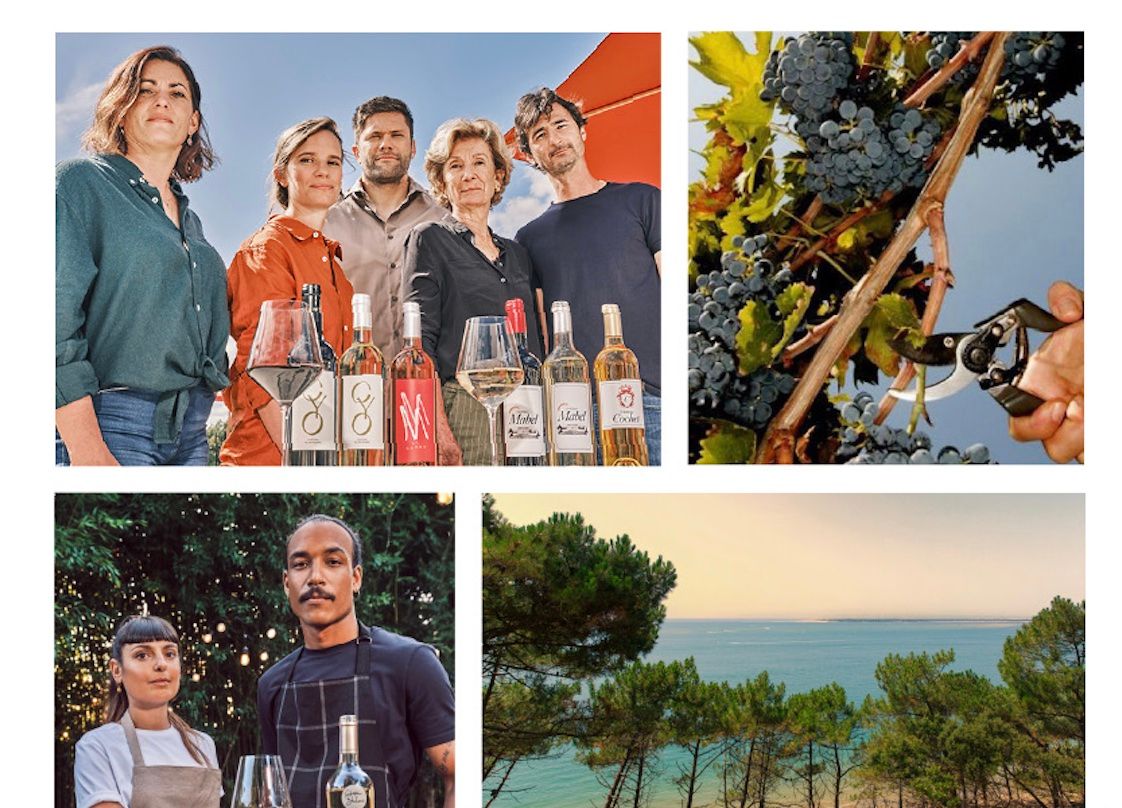“As with all prestige cuvées, the goal is balance, elegance, tension and precision. The Veuve Clicquot Grande Dame 2015 rosé has this in shedloads,” writes Smart.
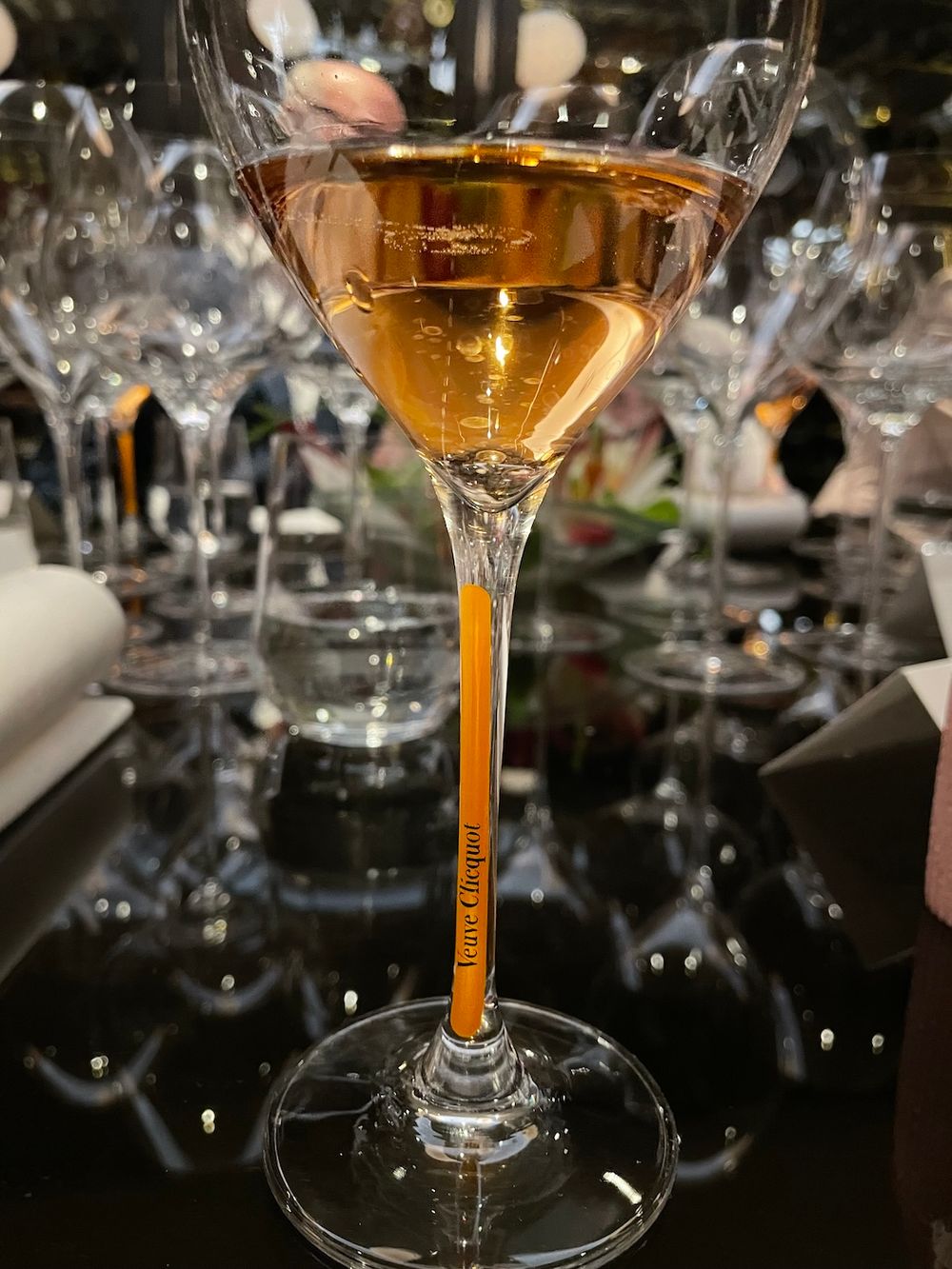
Recently appointed Möet Hennessy champagne ambassador Jacqueline Kobald takes her wines seriously. She came originally from a dairy farm in Colorado. But now living in Europe, she tells me that she and her sommelier husband decant champagne at home, thereby freeing the wine of distracting bubbles to reveal the structure underneath.
That provides a hint of the purist precision that awaits us at our dinner, unveiling one of Möet Hennessy’s latest star wines, Veuve Clicquot Grande Dame 2015 rosé. This event at London’s glitzy The Pem restaurant starts with waiters wafting around the table filling glasses from jeroboams of the maison’s NV rosé.
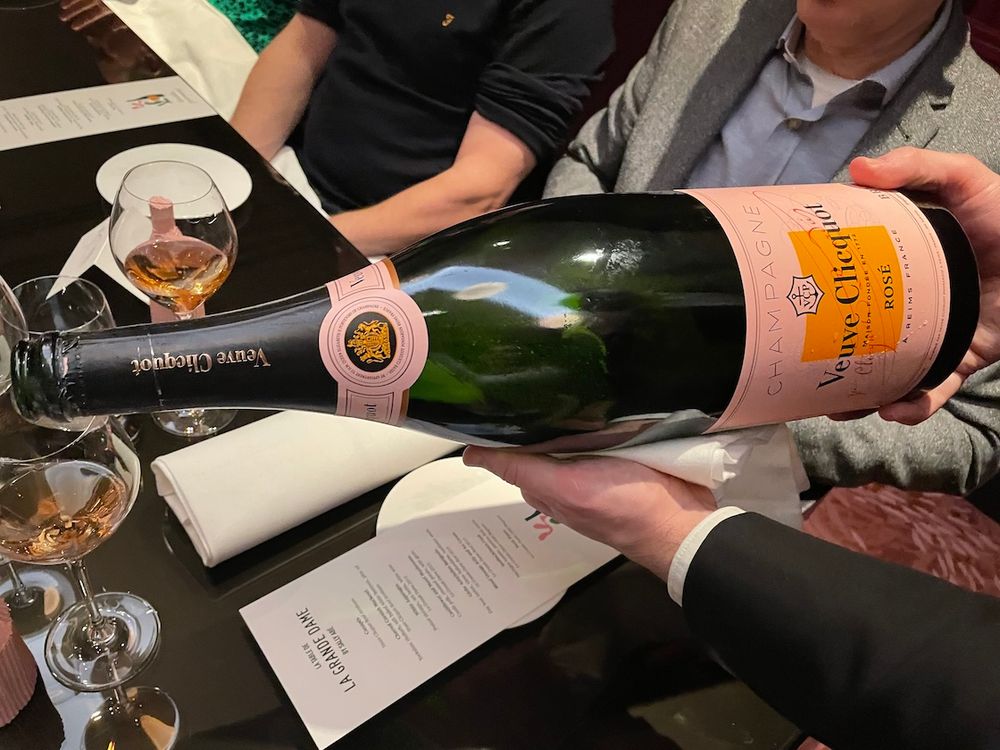
Before us are three different categories of wine glass. On the left, the usual sized tulip-shaped glass for the NV. In the middle a much bigger tulip-shaped glass that will retain the bubbles of the Veuve Clicquot Grande Dame 2015 rosé once poured. And to the right, a third Burgundian Chardonnay glass also for the Grand Dame, whose more open shape will dissipate the fizz so the wine can be appreciated more in the manner of a still wine.
The Grande Dame is, of course, Veuve Clicquot’s prestige cuvée named after Madam Clicquot. She famously took over her husband’s wine business when widowed at 27 and under her ownership the firm forged ahead with many innovations, including creation of a rosé sparkler back in 1818. Möet Hennessy bought the company in 1986.
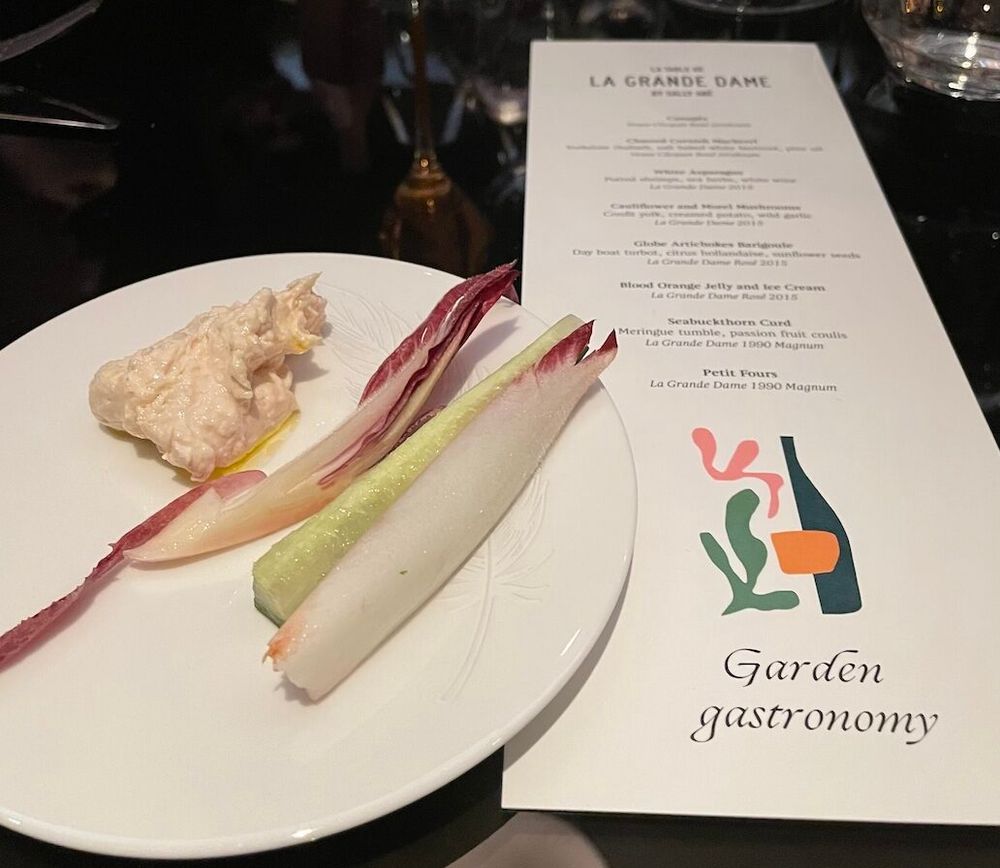
Our wines tonight are to be accompanied by eight-courses conjured up by Sally Abé (main image). The cooking style of this award-winning young chef is hearty food using her gift for capturing classic, nostalgic British dishes”. Included are Globe Artichokes Barigoules, comprising turbot, citrus hollandaise and sunflower seeds, and White Asparagus, featuring potted shrimps, sea herbs and white wine. In Veuve Clicquot’s idiosyncratic parlance, this is dubbed “Garden Gastronomy”, with the vegetables given more prominence in naming of the dishes than the meat or fish ingredients. The dessert is Seabuckthorn Curd, a high-concept passion fruit meringue.
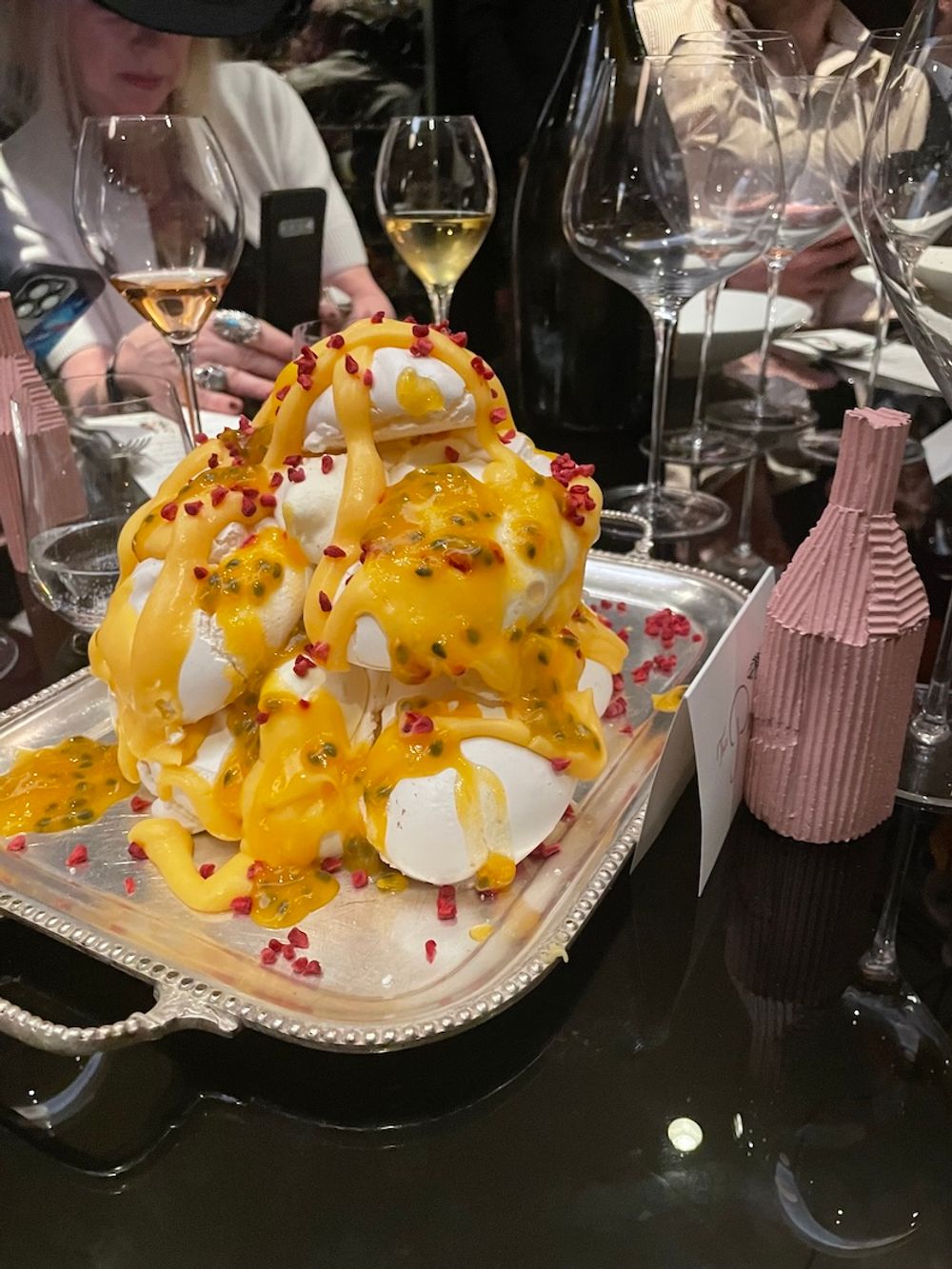
Two centuries ago, Madam Clicquot herself declared that “our black grapes give the finest white wines.” And the 2015 rosé is a blend of 90% Pinot Noir and 10% Chardonnay plus 13% Pinot Noir red wine coming from the Clos Colin parcel located in Bouzy. As chef de caves Didier Mariotti explains, this choice 1.3 hectare parcel was bought in 1743 and is the only one used for the rosé’s red wine.
So how was the Veuve Clicquot Grande Dame 2015 rosé tasting?
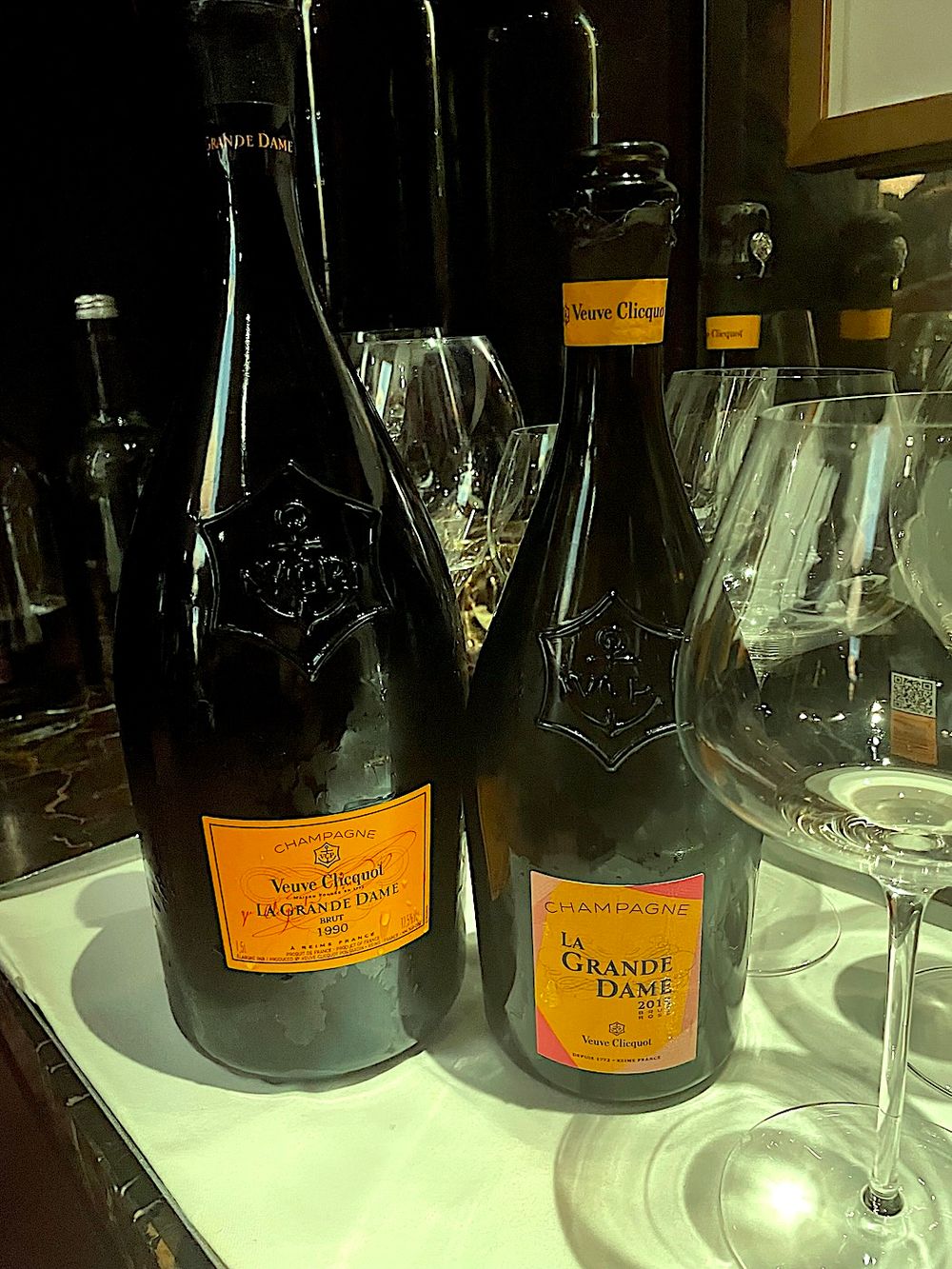
Mariotti insists that the 2015 is “Grande Dame first, and rosé after.” But he also cheerfully admits that with rosé you first taste with your eyes. Here the 2015 scores magnificently with a wonderfully clear and precise pink hue.
The 2015 vintage was one of the first really hot years. What’s described as “an exceptional vintage”, the low rainfall and plenty of sunshine made for a wine that is concentrated and well-structured. As with all prestige cuvées, the goal is balance, elegance, tension and precision. The Veuve Clicquot Grande Dame 2015 rosé has this in shedloads. With citrus notes of blood orange, plus verbena and peppermint and some delicious bready notes, the wine’s also distinguished by a marked energy.
The mousse subsides, of course, in the larger Chardonnay glass, and for those wanting to understand the constituent wines better there’s the opportunity to savour the texture and sheer length of the wine. The suggested retail prices is £205, justified in part by the ageing potential of another decade and a half.
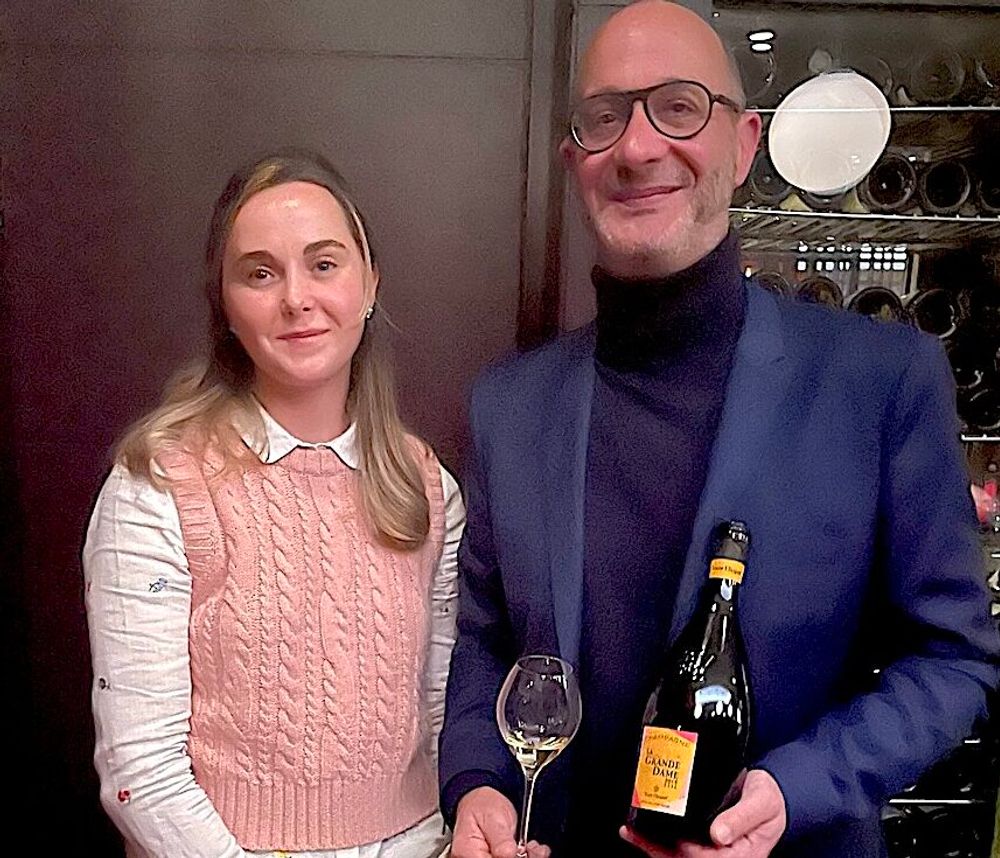
Möet Hennessy champagne ambassador Jacqueline Kobald and chef de caves Didier Mariotti
We conclude with La Grande Dame 1990 in magnum disgorged last October. Harking from a time when Veuve Clicquot used far more Chardonnay than today and from a pre-global-warming world, this is outstandingly complex and opulent and still vigorous.
Verve Clicquot believes that its current reliance on Pinot Noir makes the producer better placed than most to handle climate change which is now having a real impact: even the region’s historic cellars are warming.
Kobald explains that we could see champagne emerging in 25 to 40 years as a centre for still wines of the highest calibre, with sparkling wines made only in years when conditions suit it perfectly. This prospect seems to fill her with a lot less trepidation than you might expect. Clearly, it’s the precision wine-making that matters more than those fleeting bubbles.
